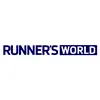Some experts recommend one day of rest for every mile raced, or 26 days of rest; and some even recommend one day of rest for each kilometer raced, or 42 days of rest. The reality is that there's no exact formula to follow for recovery after a marathon, so the best guide is really tuning in and listening to your body.
The good news is that rest does not mean no running at all, but rather a break from high intensity training like speed work or other races for about two to three weeks. In other words, there's no reason to become a couch potato.
More: 5 Golden Rules of Marathon Recovery
Minimal soreness is a good sign, but give it a few more days to kick in. Delayed onset of muscle soreness (DOMS) typically follows most marathon efforts. The soreness results from microscopic muscle tissue damage and the severity of it depends upon the fitness level of the individual and the intensity of the effort relative to the training effort.
The degree of soreness indicates the extent of muscle damage and this will influence the duration of the recovery period. In other words, the more soreness, the longer the recovery. A lack of soreness indicates you were well prepared for the demands of your race, so good job with your training.
More From Runner's World: What's the Best Post-Race Recovery Plan
Active Recovery
As a general guideline, I suggest taking 3 to 7 days completely off after a marathon. Sleep in, eat and enjoy your accomplishment. After that, begin an active recovery program.
Active recovery includes light exercise and even some running if you're not sore. Light exercise means exercising at a low intensity level, i.e., no more than 60- to 65-percent of your max heart rate for a relatively short duration, less than 60 minutes.
Activity actually helps you recover faster than inactivity because it promotes circulation. Good circulation delivers fresh oxygen and nutrients to muscles and carries away metabolic waste and, therefore, aids healing and recovery.
Walking, running, riding a bike, stretching, or swimming for 30 to 60 minutes at low intensity will promote circulation and assist your recovery. Massage therapy and foam rolling can also help relieve muscle soreness and assist recovery by increasing the body's circulation too.
More From Runner's World: The Pros and Cons of Massage for Runners



